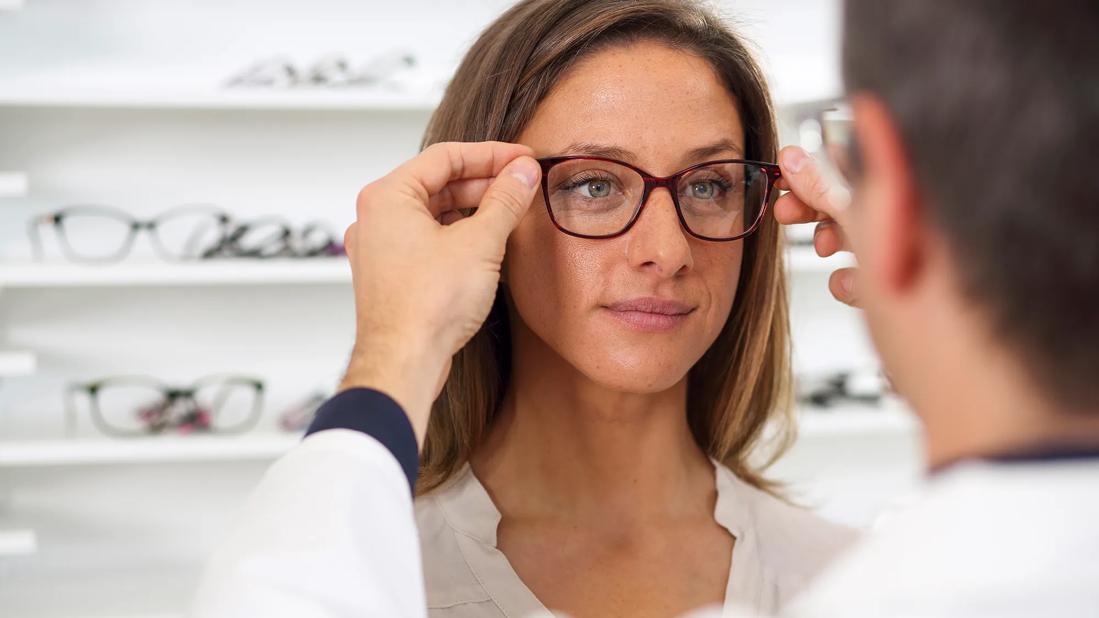It usually takes anywhere from a couple of days to a few weeks to get fully adjusted

Making any change can be hard, especially if you’re used to seeing things a certain way. When it comes to eye health, that can be especially true. Glasses are designed to protect and enhance your vision and correct any issues along the way. But if you’re new to wearing glasses or your prescription gets bumped up significantly, it might take a little more time to get settled.
Advertisement
Cleveland Clinic is a non-profit academic medical center. Advertising on our site helps support our mission. We do not endorse non-Cleveland Clinic products or services. Policy
Optometrist Kristen Borriello, OD, explains what you should and shouldn’t do when wearing a new pair of glasses, and what you can expect in the days and weeks that follow.
New glasses or a new prescription can make you feel weird at first, but that’s completely normal. Like trying anything new when it comes to health and wellness, it takes time for your eyes to adjust.
Most people feel better within a few days of wearing new glasses. You might experience headaches or feel off for the first couple of days, but the longer you wear your glasses, the less these symptoms will continue. Some folks might take up to a couple of weeks to get used to new glasses for a variety of reasons.
“The feeling of getting overwhelmed by your vision gets better and better over time,” says Dr. Borriello. “It becomes less and less of a shock or an adjustment, and then you realize your eyes actually feel better when you wear your new glasses.”
Your adjustment period could be longer if you’re wearing glasses for the very first time or if you’ve had major changes to your prescription. If you’re moving up to progressive lenses or no-line bifocals, for example, your adjustment period could take a little longer.
“Other things that may affect the length of your adjustment period are your age, the type of glasses you’re wearing, whether they’re distance glasses or near glasses, or some combination of both,” notes Dr. Borriello.
Advertisement
When you first put on your new glasses, you might experience:
These issues are more common if you’re switching to progressive lenses or high astigmatism prescriptions. You could also experience nausea in the first couple of days, but that’s typically rare and short-lived.
“It will take a little bit of time to get used to, but the longer you wear your glasses, the less you’ll notice any symptoms,” reiterates Dr. Borriello.
Whatever you do, try not to wear contacts during the adjustment period. Switching between contacts and glasses could cause dizziness, headaches and disorientation. And it could take longer for you to get used to your new glasses if you keep going back and forth.
“I wait until someone is fully adjusted to even try contacts, unless they have a medical condition where contacts would improve their vision, like keratoconus or other corneal diseases,” clarifies Dr. Borriello.
To make the most of your adjustment period, take note of these strategies:
If you try these tips and are still experiencing issues after a week or two, bring your glasses back to where you got them to make sure they were made correctly. You can also schedule a follow-up with your eye care team to check your prescription.
“If they were made correctly and you’re still struggling with them, reach out to your doctor so they can check your new prescription,” advises Dr. Borriello. “It’s never too late to adjust your glasses.”
Advertisement
Learn more about our editorial process.
Advertisement

The lifespan of contact lenses depends on whether you have reusable or disposable lenses

While rare, it is possible to have an allergic reaction to materials used in contact lenses or ingredients found in contact solution

Keep your eyes healthy by not sleeping in your contacts, properly caring for your lenses and wearing eye protection when necessary

While it may seem harmless, showering — or even swimming or washing your face — with contacts in can cause sensitivity to light, irritation and even an infection

Even napping with contacts in can lead to eye infections, lens displacement and dry eyes

Both have pros and cons, but ultimately it’s a personal decision only you can make

Your eye prescription reveals a lot about your eye health, including how they’re shaped, how well you see and what your new glasses can do for your sight

Polarized lenses have an added benefit of a special coating that reduces glare on reflective surfaces like water and snow

Start having sex about 72 hours before ovulation, then at least every other day during your fertile window

Attachment theory suggests that your earliest relationships shape connections throughout your life

It isn’t a recognized mental health disorder, but research shows that problematic social media use can negatively affect your mental health, self-esteem and sleep